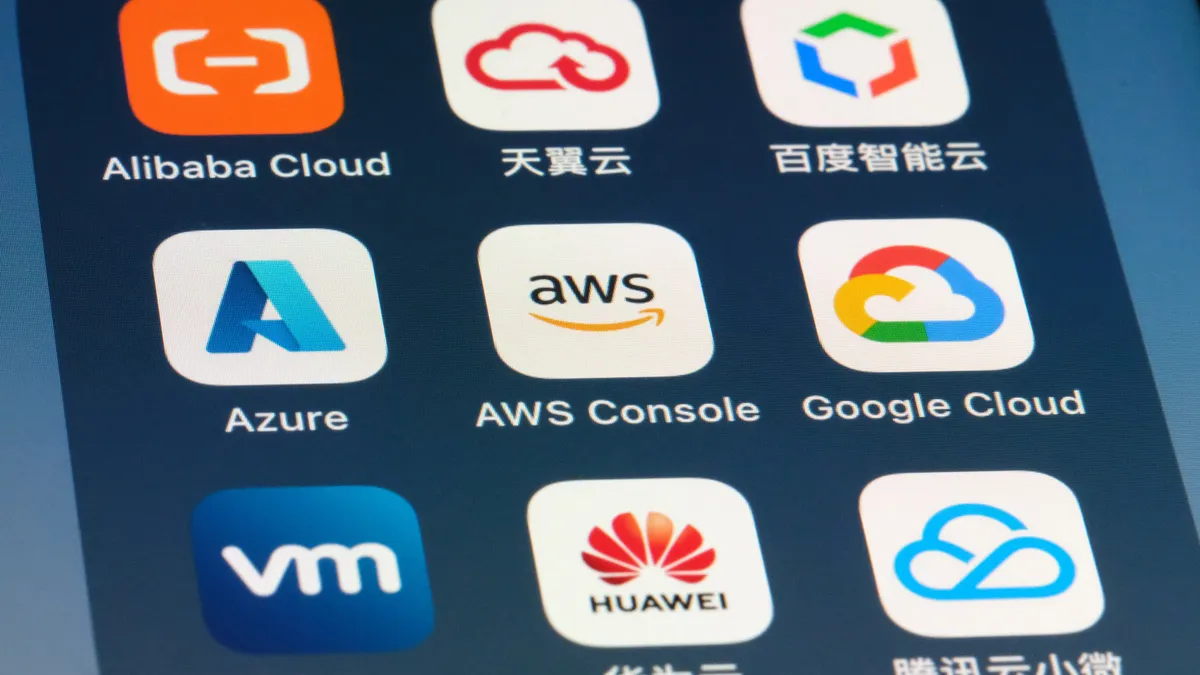Editor's note: The following is a guest article from Rishi Kulkarni, enterprise architect director at Capgemini Americas.
Picture this: you're the CIO of an enterprise. Five years ago, you chose one cloud platform and migrated all your tools, applications, and technology capabilities. Today, everything is still operating as planned – with your technology smoothly integrated and maximized to its full potential.
Spoiler alert: this situation is about as realistic as kids choosing to eat vegetables instead of ice cream.
If the past two years taught industry anything, it's that change happens and often happens quickly.
Years ago, some of the main benefits of transitioning from data centers to cloud platforms were to gain flexibility and a cost advantage.
While companies that migrated to cloud aren't fully locked in, they need to spend money to change platforms and providers – and the way technology is evolving, those changes are becoming necessary more frequently.
Having a fluid architecture in place is crucial, as vendor lock-in or an inability to move from a data center to the cloud can hold companies back.
CIOs must continuously evaluate the right path: Should they keep using the cloud platform they're currently on, or shift certain applications to another? What about the tools and data they're still storing on-prem?
Solutions depend on the unique situation of each organization – but properly defining the right cloud strategy is the only way to maximize its capabilities.
There are typically three scenarios: mono-, multi- and hybrid-cloud strategies. Here are the pros and cons and when it makes sense for companies to take each approach:
Mono-cloud: the first step for many organizations
At the beginning of this article, I painted a picture of an unrealistic world where an enterprise made a major technology decision (specifically, a mono-cloud migration) and five years later nothing needed to change. This was a common pattern for many CIOs who declared a cloud platform of choice and fully committed their resources to it.
In recent years, companies have realized this setup has many inefficiencies and drawbacks. The chance of one platform sufficiently meeting all an organization's needs are slim.
Certain workloads and applications operate more efficiently on certain platforms, but when boxed into a mono-cloud strategy, options are limited. Long-term, it doesn't give organizations the breathing room they need to react alongside emerging capabilities and innovations.
There's no doubt that a mono-cloud strategy is applicable to many organizations just beginning their cloud journeys, but enterprises at this early stage should begin building an architecture that's fluid enough to take on additional cloud platforms in the future.
Multicloud: identifying which platforms work best with which tools
To avoid lock-in and to capitalize on the latest solutions, multicloud is becoming a highly adopted approach. A recent Gartner survey found 81% of public cloud users use at least two platforms.
The question is: how do these platforms, particularly the hyperscalers, differentiate?
If you were to build and use an AI and machine learning-based application, should you build it on the current cloud platform that has all your infrastructure, or should you look toward another platform that offers more AI and ML services at a lower cost?
Multicloud strategies give organizations the flexibility to evaluate their options. Most companies today recognize certain tools are more productive and practical within one cloud platform, and some workloads will add more value in another.
It all depends on the specific environment, technology stack and overall goals.
Hybrid cloud: the logical approach for many enterprises
While it's a rare occurrence to find an enterprise today that's not leveraging cloud, many longstanding companies are still going to have certain workloads in a data center.
Restructuring an entire product portfolio to be fully cloud-based is a challenging prospect that takes time, making a hybrid-cloud approach the logical step.
If part of an application is sitting on-prem, and part of it is stored on a cloud platform, what's the best way to manage that ecosystem?
A complete, full shift to cloud may be the long-term goal, but in the meantime, containerization and orchestration provide a viable hybrid option to gain similar levels of elasticity and performance without moving all their workloads to cloud.
Companies need to figure out the best way to navigate this hybrid ecosystem, leveraging tools, technologies and platforms that make their journey to cloud seamless.
These companies in many cases have multicloud and hybrid cloud all in one, leveraging multiple cloud platforms while still housing certain tools in data centers.
In 2019, IDC predicted 90% of large organizations would adopt hybrid and multicloud strategies within the coming 2-3 years, and three years later, industry is still seeing that take shape.





















